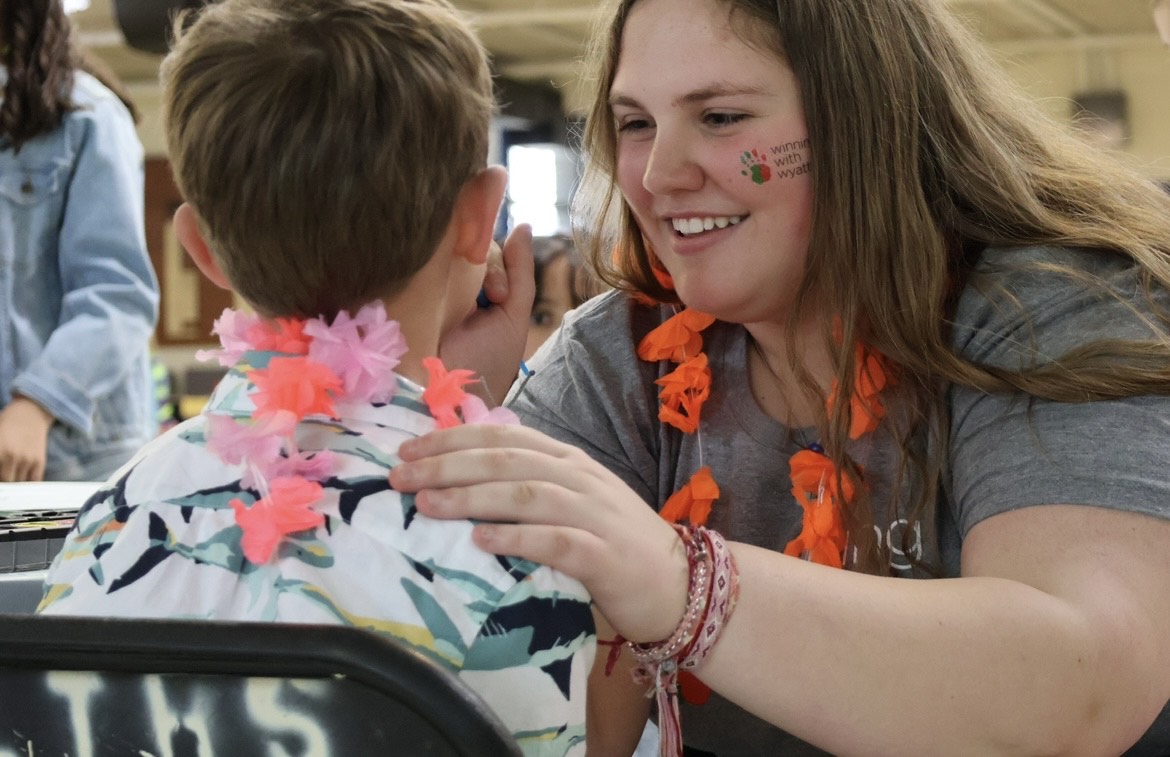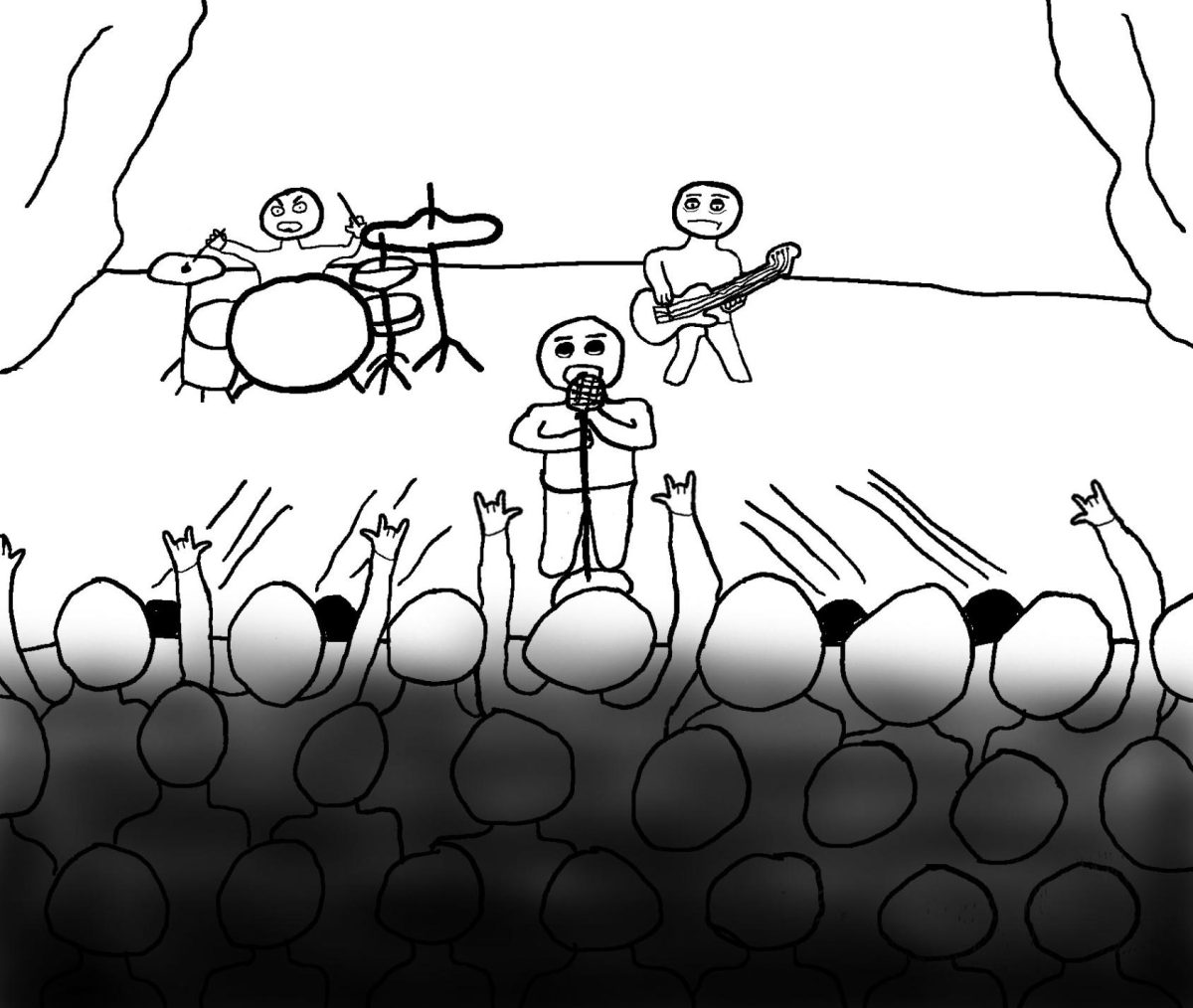Mental health days allow needed breaks
by: Emoni Brooks
Climbing another flight of stairs nearly every other period. Awkward small talk with classmates who are essentially strangers. Being timed on the toilet by bathroom logs. All while abiding by a strict schedule of 49-minute classes.
These are the primary parts of the average high school student’s itinerary. High school can be the most amusing and rewarding years of your life, but some days, it can also be the most draining, void, or overwhelming. Therefore, a freedom students appreciate is the choice of a break—a Mental Health Day.
From a schedule to assignments to robotic responsibilities in school, there’s not much of a choice in day-to-day actions. We all walk mindlessly through the hallways with our next step prearranged or typed on a Canvas schedule. Some are even unaware of their mental instability, allowing mental illness to build up until it takes a crisis to resolve.
Taking a mental health day is a conscious decision to reconnect with your mind and body. Something that doesn’t happen enough for teenagers is setting out a career for the rest of their lives: a day of decisiveness and rest. So, no matter your course of action on your mental health day you decompress from the expectation of constant productivity and become aware of your well-being, permitting the opportunity to recognize the beginning signs of any unsteadiness.
Schools have addressed mental health head-on in the past three years, with mental health days being a step in the right direction. Our administration has acknowledged that growing teens statistically need more rest than the average adult. More deeply, burnout, disassociation, anxiety, and more are common mental issues young adults have consistently been struggling with. Taking a break from crowds, working independently, or pausing everything to take the wheel in their own life are all benefits of how the day can improve their psychological well-being. This also gives time to take preventive or proactive steps to better their situation if need be or change environments.
Moreover, these days are successful with educational outcomes as well: returning mentally prepared for the next day, creating healthy study cycles incorporating rest, catching up on work, reducing stress levels, and increasing focus. Mental health days help with issues from surface-level to severe problems. Simply an environmental change from the chaos of school can make drastic changes in our physiological health. So, for students whose day looks like a 16-step skin routine, an hours-long study session can be just as successful as another whose day is eating out and binge-watching their favorite show.
For years, students have been faking sick or missing school to provide the break mental health days contribute. Ultimately, misusing their limited sick days affects their attendance forms when truly sick or their performance when sick and forced to attend. Formally granted, mental health days are necessary and inevitable. They address surface-level burnout, nurture mental wellness, avoid major internal crises, and foster present mental disorders. Mental health days effectively act in caution and care for the well-being of all students.
Mental health days don’t offer solutions
by: Autumn Schmidt
Establishing mental health days students can take as days off is common throughout Illinois public high schools. LT’s maximum excused mental health day count is five. This does go towards the seven excused absences a student has per semester. Once a student goes beyond the seven full missed days, certain warnings and consequences start to apply. While mental health is a real issue that affects so many teenagers, and days to relax are definitely needed, taking advantage of all your mental health days may not necessarily be the best solution. Missing too many days of school can even amplify one’s stress since there is added work to be done.
We all have those days where we feel as though we need to go home, but to thrive in the real world, we need to also recognize the values of perseverance and adversity. If habits of taking too many mental health days begin in high school, especially if the privilege is abused, then it shouldn’t be a shocker that the ideal of taking too much time off is not as prominent in the work environment. Some students may also not be able to differentiate between truly needing a mental health break or just feeling a bit worn out and wanting to go home—which is just the reality we have to face.
Now, many students don’t abuse mental health days and truly do use them when needed. Everyone needs a break from our problems, whether those issues are related to school, the work setting, or just emotionally. Taking a day off and using a mental health day once in a while is perfectly healthy and even normal. It is when the concept of mental health days becomes the solution to our problems that things start to go downhill. We begin to rely on the belief that our mental health issues will all go away with a day off, and therefore we will take a day off every time an issue comes our way. To heal temporary issues, or exhaustion, of course having your mind at ease is very helpful—but for long-term problems, there are better solutions.
Setting new goals and even focusing on self-care are ways to have newfound relaxation. For more serious issues, reaching out to our loved ones, such as friends and family, rather than isolating ourselves, is important. Even seeking professional help, as it is nothing to feel ashamed or embarrassed about. In fact, the average person in the U.S. who sees a therapist continues to increase each year.
Edweek, a professional organization focused on the priorities of students, explains that, on occasions, it is actually healthy for students to experience some anxiety within a school setting. This is because they need to know they are supported by the school system. Healthy anxiety is also a topic brought up in many schools when discussing mental health days. This is the nervous feeling students may experience right before a test or a difficult class. This feeling of anxiousness is completely normal and sometimes even healthy. Part of life is feeling nervous before a big accomplishment or feat, and this is something that you cannot always just avoid.
Dampening teenagers’ emotions, rather than having them face them head-on, can also prove to be a challenge. Change is constantly happening in our lives, especially during our teenage and high school careers. A side effect of change is often stress, but change is going to happen, no matter what. And often, slowly accepting change and facing it is a good solution.
Professionals warn against students skipping too much school to avoid certain issues or anxieties due to change. Schools are also expressing frustration over kids missing too much school, and while taking a day off when needed is crucial, it is important for kids to face up to their strong emotions, positive or negative.





















![Movie poster for '[Rec]" (2007).](https://www.lionnewspaper.com/wp-content/uploads/2023/04/rec-640x900.jpg)




